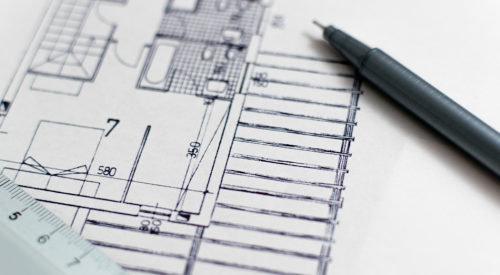Todd Hallett and I are running a LeanPlan Workout session this week in Tennessee with one of my favorite builders. In the years I have known them they have grown from #11 in their market to #2 last year and this year there’s a good chance they will be #1. They are beating all the nationals. These guys truly “get it” and accomplished all this during the worst housing recession in history. As good as they are, they wanted to take it deeper, so this they engaged a total of 24 of their suppliers & trades to generate more than 300 ideas to improve plans, using our highly-structured process. Savings will run into the “many thousands” per unit.
These guys do not have “bad plans” by any means. In fact, Todd and I would rate them as much better than average. It never ceases to amaze me, though, the wisdom of the great majority of the suppliers & trades and how much they can find even in good plans, given a strong process to follow. (Sure, there are exceptions, and we had one here that Todd and I and the builder team have not quite yet gotten over!) Create the right environment, provide the right questions and structure and they’ll find money you never knew you had. If you think you’ll get these product improvements by beating them down in coercive bid process, you are just taking the lazy way out and you’ll realize neither the results nor the buy-in.
One of my favorites this week was the drywall contractor. This gentleman was anything but shy. He followed the instructions, spent the time, and came in with an impressive number of savings and improvement ideas. He told us a lot of interesting stuff, such as in all the years he has averaged an 8-10% waste factor, but that can range from 5% to 15% depending on the crew, the house design and how the board is purchased. With an average bill of $7500 material and labor for drywall in these houses, the variance could run more than $1,000 per unit based on these factors and we aren’t even counting waste haulage. He described vividly how extra seams cost him a ton of money and time, as do “strange little niches,” over-done arches, and odd-sized walls, among a host of others.
He talked about tradeoffs between speed and waste and wondered about the tightness of the schedule, believing it generated 2% more waste. But when we described the cost of adding one more day to the schedule, he softened his view considerably. He was a businessman and he listened to the builder’s point of view. He described further how dimensions work really well in increments of 8, 9 and 12 feet but 10’ is a problem and 16’ board almost always costs him more than the builder thinks it might save. He hated it. It was clear that getting him in early on design and laying out the ideal board sizes would save everyone money.
I spend a lot of time on scheduling and as he described his schedule, the builder learned something. This is his ideal schedule:
Day 1. Hang
Day 2. Tape & 1st coat
Day 3. Dry out
Day 4. Skim Coat
Day 5. Dry Out (depending on weather, sometimes only 1 day needed)
Day 6. Sand & finish
The builder would like to schedule him for 5 days and have him use Saturday when he needed the 6th day. That is a set-up for schedule chaos. You cannot build your schedule on the best case scenario. Even if it only happens 25% of the time, build in that 6th day and live with it. You have to base it on reality. If you cheat on that extra time at just 4 or 5 times in a schedule, you will never get it right and even-flow will remain a dream. Even-flow, he stated emphatically, was the goal, the ideal which would allow him be truly efficient. As most of the industry functions, however, one week he has to function as if he is half his average size, the next week he has to somehow be 5 times larger, then the week following he has nothing. (And we wonder why it is hard to get good people into the building trades?)
This drywall contractor was passionate about how hard he worked to keep his best and most experienced crews. He clearly wanted to help the builder because he knew that he, too, would also improve in the process. Is this the kind of guy you want on your team? We met a lot of them this week. If you are continually turning, burning and churning your suppliers and trades, you never get the benefit of their wisdom. Find the best trades, even if you do have to say goodbye to some old friends. Develop the relationship. Use ALL of their capability and keep them around. Everybody wins.












